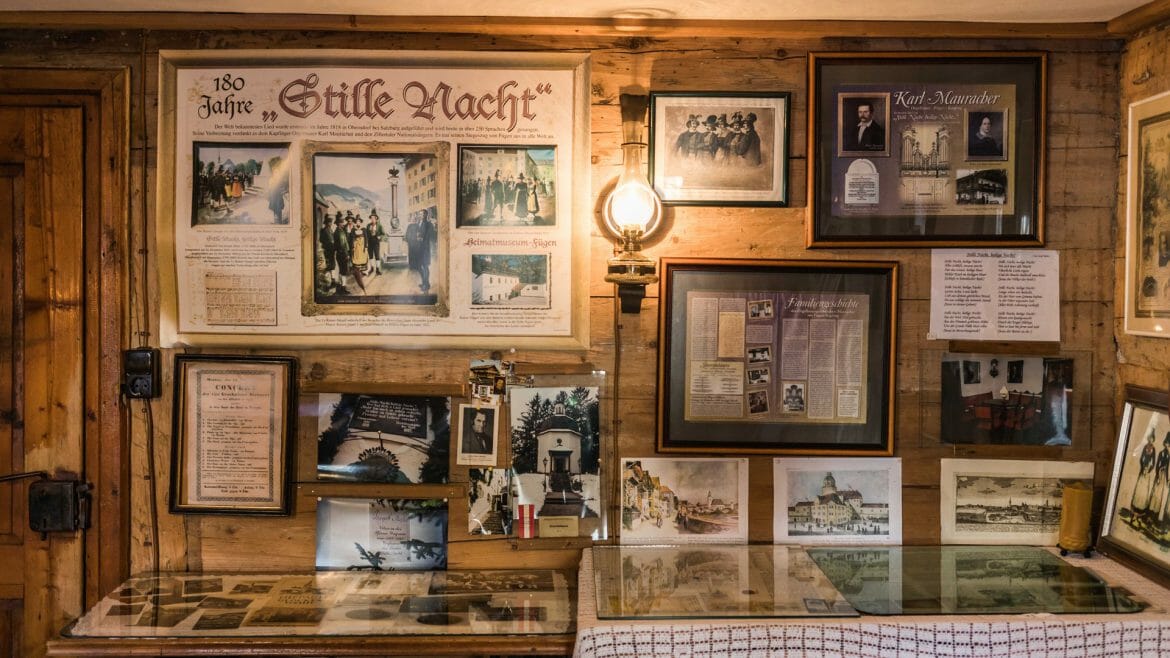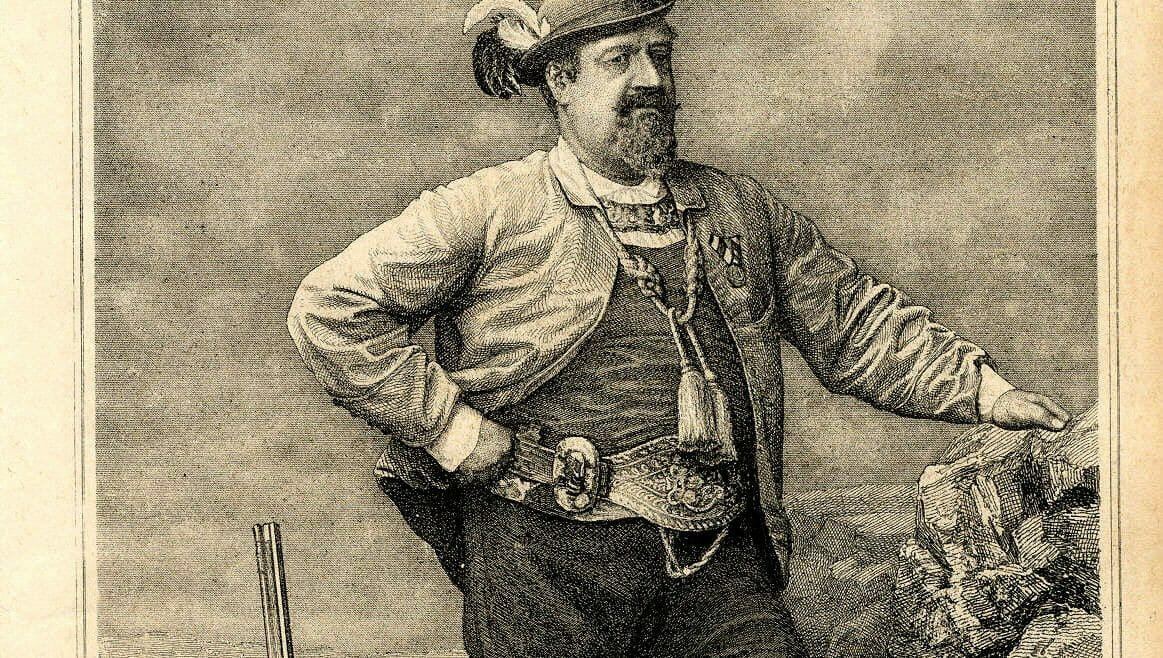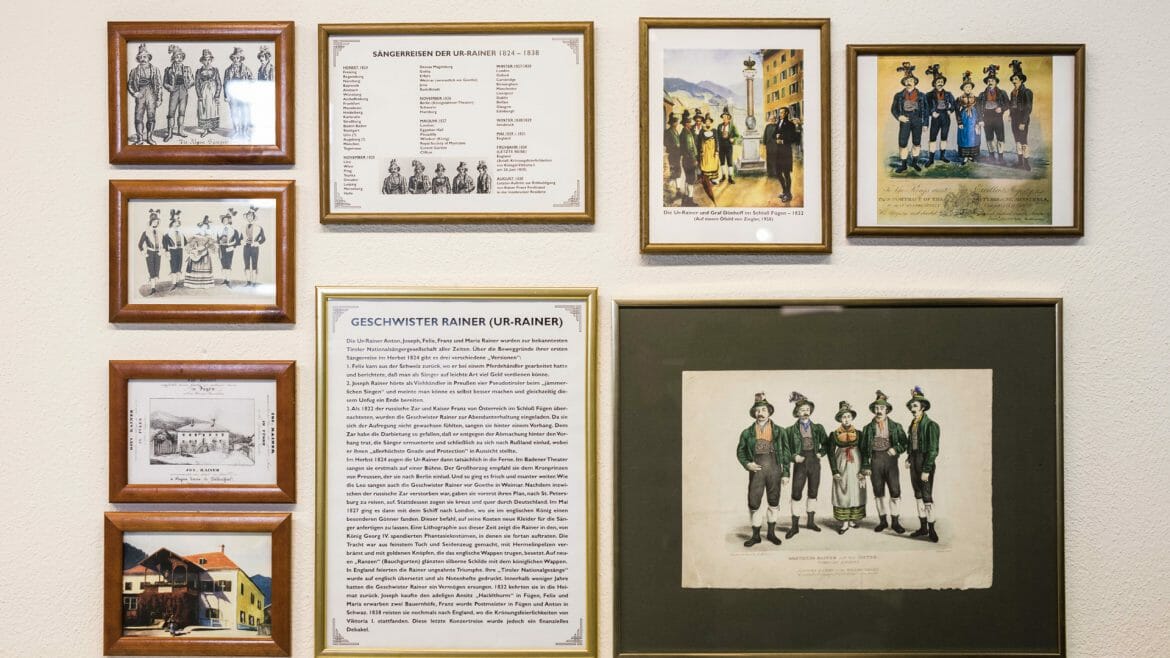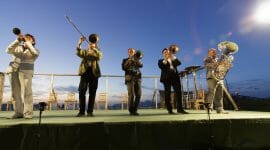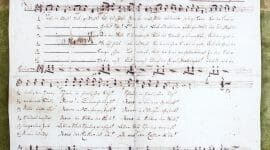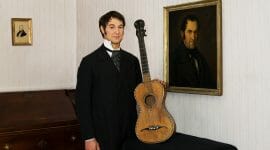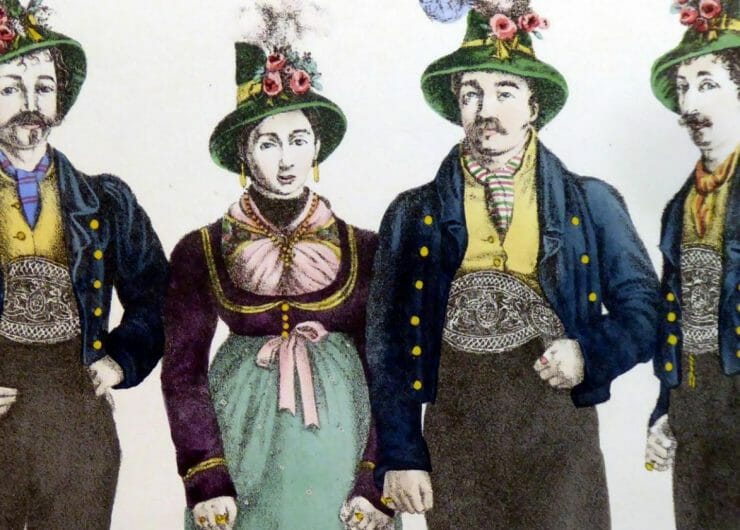
The story of the two singing families and their bond to the world’s most famous Christmas song begins with the organ builder Carl Mauracher from Fügen. It is said that in 1824/25 Mauracher was working on the reconstruction of the organ of the St. Nikola Church in Oberndorf near Salzburg and brought the song from there to the Zillertal valley. There, the song spread rapidly and was frequently performed at festivities during the Christmas period.
The talented Strasser Siblings perform the song in Germany
The Strasser Siblings have been proven to have been the first band to perform “Silent Night”. The family originally came from Laimach near Hippach. The father, Lorenz Strasser, was a farmer, shopkeeper and glove seller. Together with his children, he lived in the “Strasserhäusl”, still preserved to this day. Strasser was a travelling salesman and would go to the biggest markets in Germany during the winter months, such as in Leipzig or Berlin. His vocally talented children Anna (born 1802), Josef (called Peppi, born in 1807), Amalie (born in 1809), Caroline (born 1813) and Alexander (born 1794, although he already passed away in 1831) accompanied him during his travels. They sang — always dressed in their traditional garments — Tirolean national songs for the purpose of attracting more customers. The siblings are said to have sung “Silent Night” at Leipzig’s Christmas market in 1831 already, as well as at the Christmas mass of the Royal Saxon Court Orchestra at the Pleissenburg fortress.
“Silent Night” celebrates great success in Leipzig in 1832
In December 1832, an ad placed in a Leipzig newspaper announced a concert by the Strasser Siblings in the Hotel de Bologne. It has been shown that, next to various Tirolean songs, the group also performed the Christmas song “Silent Night”. Furthermore, publisher August Robert Friese from Dresden released a document (probably in 1833) containing four authentic Tirolean songs, number four of which was the now famous “Silent Night”!
After this publication, several printed editions of “Silent Night” followed in Germany. And although the song clearly originates from Salzburg, “Silent Night” was considered a Tirolean or Zillertal valley folk song for a long time. This was due to the fact that the Strasser Siblings had originally adjusted the song’s melody to their own taste and sang it in a novel way. And thus, the simple church song became a folk song, which, thanks to all the Tirolean national singing bands, ended up becoming famous all around the world.
The Strasser siblings’ concert tour
Following their success in Leipzig, the Strasser Siblings began touring Germany. Among other places, they performed in Dresden, Berlin and Königsberg. Their emotional performance of the Christmas classic also helped inspire others: The choir of the Berlin Cathedral adopted the song into its repertoire following a performance by the Strasser Family. Frederick William IV of Prussia even honoured “Silent Night” by calling it his favourite song. Following the early death of Amelia Strasser in 1835, the Strasser Siblings stopped appearing publicly. The song, however, pressed on with its journey around the world.
The Ur-Rainers laid the foundation for the song’s success
In 1839, another native of the Zillertal valley embarked on a journey to spread Tirolean folk music into the world. At the time, he was only 18 years old and wanted to travel to America with his Rainer Quartet, known as “the Rainer Family”. Ludwig Rainer (born 1821) originated from the famous Rainer Family of singers. Their first generation, the so-called “Ur-Rainers”, had already been very successful as a travelling band. Together, they performed between 1824 and 1839. At first, the band consisted of four members. The siblings Maria (born 1788), Felix (born 1792), Franz (born 1794) and Joseph (born 1800) Rainer. Later on, an additional brother, Anton, joined them on their travels. The family started singing — so it is told — after the Ur-Rainers had performed for Franz I of Austria and Tsar Alexander I of Russia at Fügen Castle. The Tsar was so impressed with their talent that he invited them to St. Petersburg. Although the journey never came to be, the Rainer Siblings were asked to travel to and perform at countless royal courts in Europe and for many princes and kings. In 1827, the Ur-Rainers dared to journey to England. Their performances were very well received: Piano virtuoso Ignaz Moscheles translated the most popular songs into English and even published the Tirolean Melodies. King George IV asked the Rainer Singers several times over to perform at his court. The Zillertal natives even got to meet the future Queen Victoria and travelled back to England in 1838 to attend her coronation. In 1839, they appeared publicly for the very last time.
Ludwig Rainer continues the legacy of the Ur-Rainers
In order to connect to the success of the first generation, Ludwig Rainer had his new band cast professionally. Ultimately, his cousin Helene Rainer, Margarethe Sprenger and Simon Holaus joined him on his tour which would become a truly global one.
In 1839, they embarked on their America tour, which lasted until 1843. Their journey led them from Boston to New York and then to St. Louis and Philadelphia. It is likely that “Silent Night” was sung in America for the very first time on Christmas 1839 in New York in front of the Hamilton Monument.
Although the first generation of Rainers had travelled and worked on the basis of being suggested by one party to the next, the “Rainer Family” began to organise itself more professionally. Following the successful concert tour, during which the band’s line-up was changed, Ludwig Rainer continued to tour Europe as a Tirolean national singer. Together with various bands, he performed in Paris, Northern Germany and Turkey, as well as in St. Petersburg. He returned to Austria and built a hotel at the Achen Lake in Tirol, where the art of Tirolean singing was both valued and maintained. He died in 1893.


